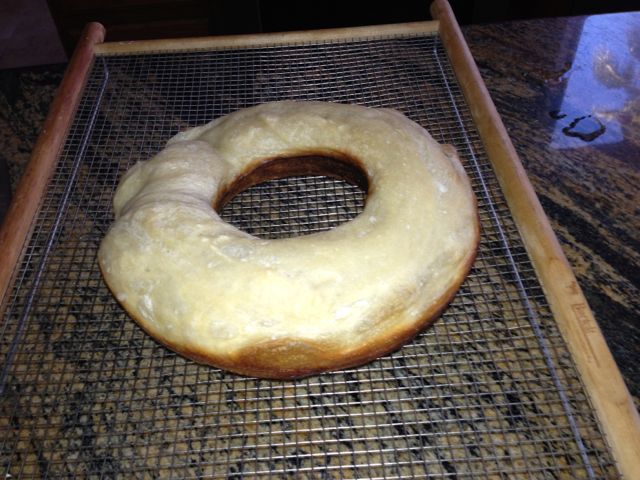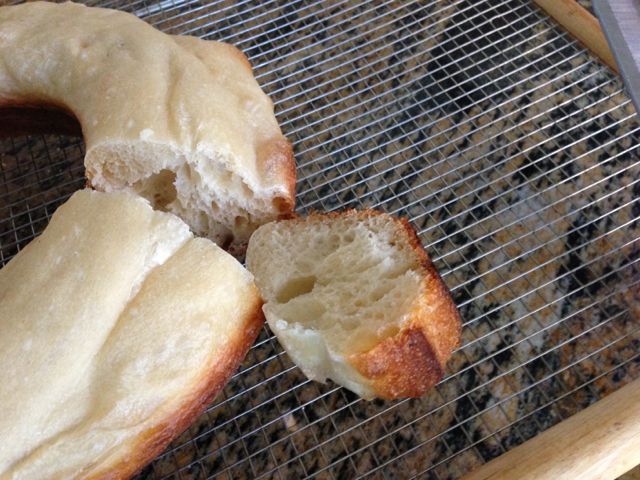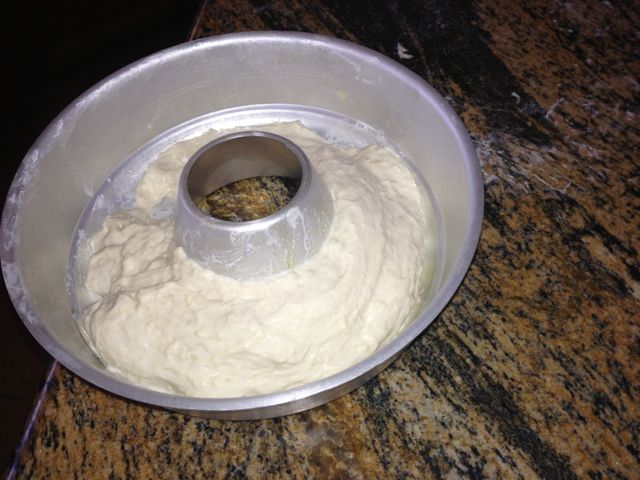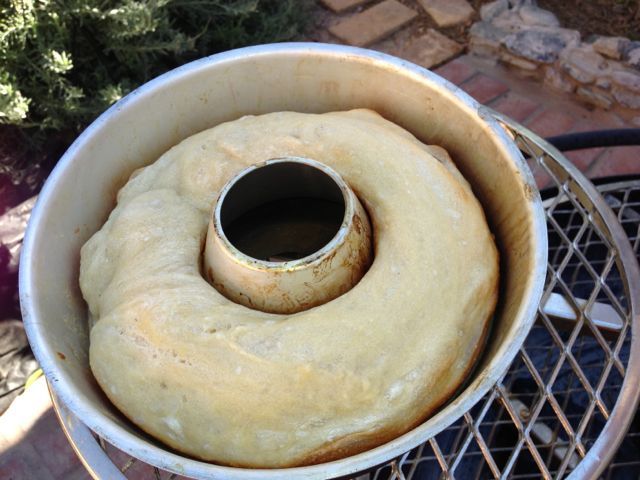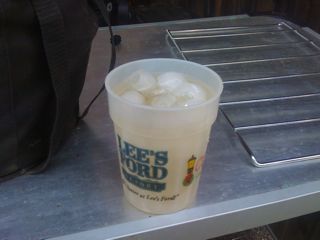As a person with more interests than I can effectively manage, I frequently try to consolidate. That is, take pictures from airplanes, draw and sketch while traveling, make beer and wine in an airplane hanger and so on. So, it is no particular surprise that I might try to perfect a way to make bread while on a sailboat voyage. The surprise here is that the techniques developed or used may have value in other situations such as camping, back-packing, or . I start with my almost no knead bread and adapt it to the facilities, equipment, and needs of Gypsea Dream. The needs suggest a smaller batch than I typically prepare for family reunions at home. I need multi-day dry storage for ingredients, a convenient way to provide proofing containers and a way to bake. Gypsea Dream has a rail mounted Magna grill as well as a flat top, two burner LP-gas stove. I also carry a special stove top baking pan from Omnia in Sweden.
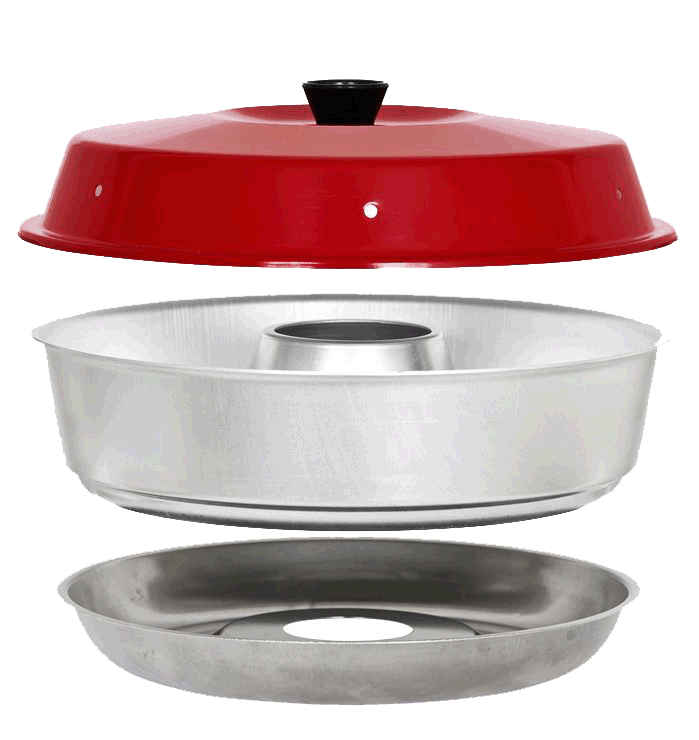 First, a special note about the Omnia. In general, I am trying to avoid special or unique, extra stuff on Gypsea Sea. However, although I specifically purchased the Omnia for experimentation with bread, I have found this pan to be one of my favorite. It is very light and versatile. On the downside, it is light enough to dent easily and it shows the results of cooking very quickly. On the upside, it cooks well in a variety of situations and for a variety of recipes. Its design makes it fairly forgiving to burner temperature. It is available on Amazon. The Omnia website has an appropriate recipe book.
First, a special note about the Omnia. In general, I am trying to avoid special or unique, extra stuff on Gypsea Sea. However, although I specifically purchased the Omnia for experimentation with bread, I have found this pan to be one of my favorite. It is very light and versatile. On the downside, it is light enough to dent easily and it shows the results of cooking very quickly. On the upside, it cooks well in a variety of situations and for a variety of recipes. Its design makes it fairly forgiving to burner temperature. It is available on Amazon. The Omnia website has an appropriate recipe book.
One of the secrets of good bread making is the use of a scale when measuring dry ingredients. This is to avoid inaccuracies arising from packing density variations in dry ingredients. Obviously, I would rather not carry a scale along on my boat so I decided to pre-measure and package all dry ingredients prior to departure. I put the ingredients in a zip-lock bag and then put that bag inside a vacuum bag. Yeast action requires the presence of oxygen so the sealed package should last a long time prior to use.
![]() When it is time to bake, I just unseal the vacuum bag and add a predetermined amount of water to the dry ingredients. I squeeze and "knead" the bag to mix the dough and proceed to let the first rise happen in the bag.
When it is time to bake, I just unseal the vacuum bag and add a predetermined amount of water to the dry ingredients. I squeeze and "knead" the bag to mix the dough and proceed to let the first rise happen in the bag.
![]() So let's talk about the recipe. If you read about the ciabatta on this site, you know I prefer very high hydration doughs. This one is slightly less so but is tailored to the environment and available equipment. I reasoned that one cup of water would be fairly easy to measure and would yield an appropriate volume of bread.
So let's talk about the recipe. If you read about the ciabatta on this site, you know I prefer very high hydration doughs. This one is slightly less so but is tailored to the environment and available equipment. I reasoned that one cup of water would be fairly easy to measure and would yield an appropriate volume of bread.
Flour = 280 grams
Salt = 10 grams
Yeast = 7 grams (or half package)
![]() above ingredients mixed dry and sealed
above ingredients mixed dry and sealed
Water = 235 grams or milliliters (1 cup)
![]() water added to dry ingredients and mixed thoroughly
water added to dry ingredients and mixed thoroughly
I let the wet dough rise in the zip lock bag. It should nearly triple in volume. This rise can be slowed by keeping the bag cool. After this first rise, a stretch and fold or two is appropriate. If, however facilities preclude this activity, the dough can be shaped and committed to the baking vessel.
![]() Baking can be done using the Onmia pan on a stove top. Temperature control is a bit iffy but low flame height seems to work pretty well. The bread shown here was baked for about 30 minutes.
Baking can be done using the Onmia pan on a stove top. Temperature control is a bit iffy but low flame height seems to work pretty well. The bread shown here was baked for about 30 minutes.
![]() Alternatively, baking can be done inside the Magma Grill properly equipped with a diffuser to even out the heat. Any bread ban or cookie sheet will do. A small pizza stone is a useful accessory for this arrangement. Again, the idea is to make the heat spread through the "chamber" evenly rather than direct heat on the pan bottom. And, of course, temperature will need to be determined experimentally.
Alternatively, baking can be done inside the Magma Grill properly equipped with a diffuser to even out the heat. Any bread ban or cookie sheet will do. A small pizza stone is a useful accessory for this arrangement. Again, the idea is to make the heat spread through the "chamber" evenly rather than direct heat on the pan bottom. And, of course, temperature will need to be determined experimentally.
Also, a word about the finished product. Some of you may have wondered about the somewhat overcooked appearance of the ring loaf in the pictures. It tasted excellent with a crunchy crust and wonderful crumb texture. One more example of how easy it is to be successful with higher hydration bread.
![]() Let's go Sailing!!
Let's go Sailing!!
